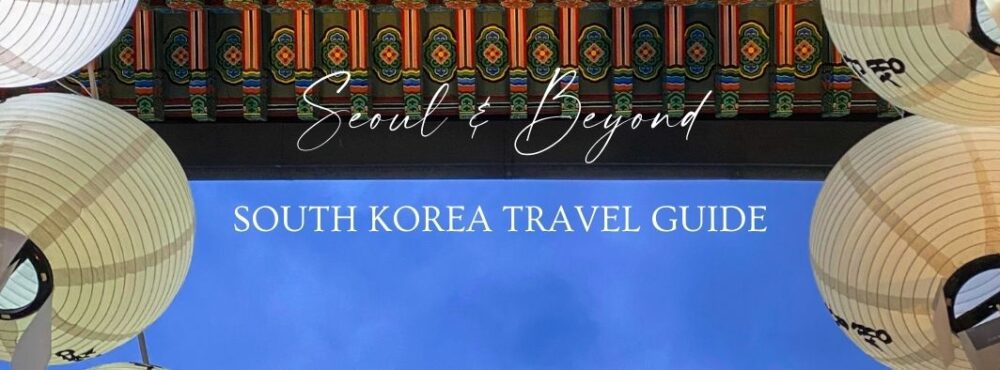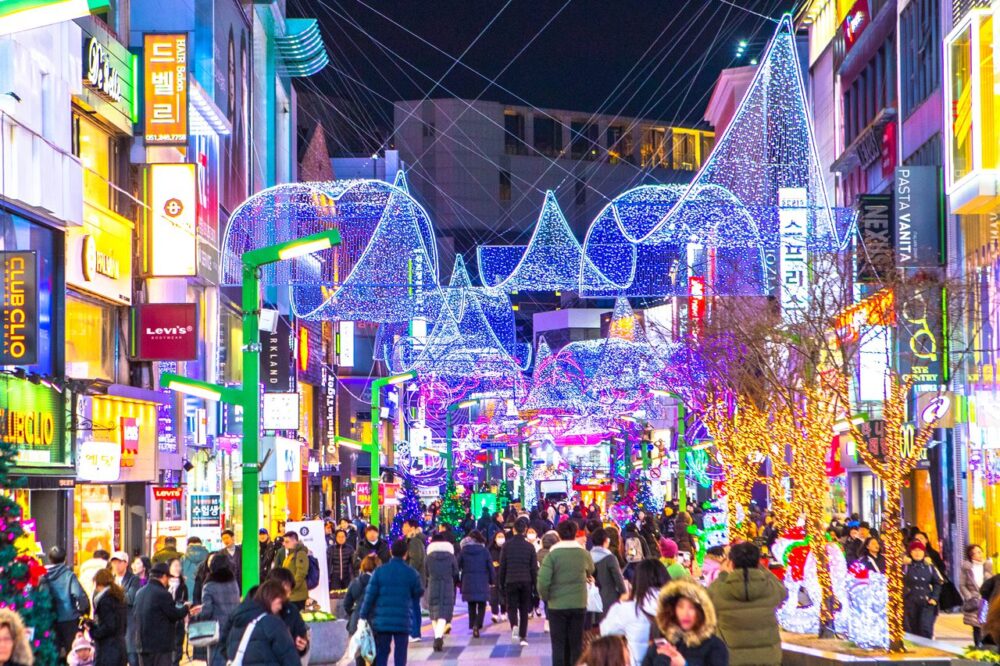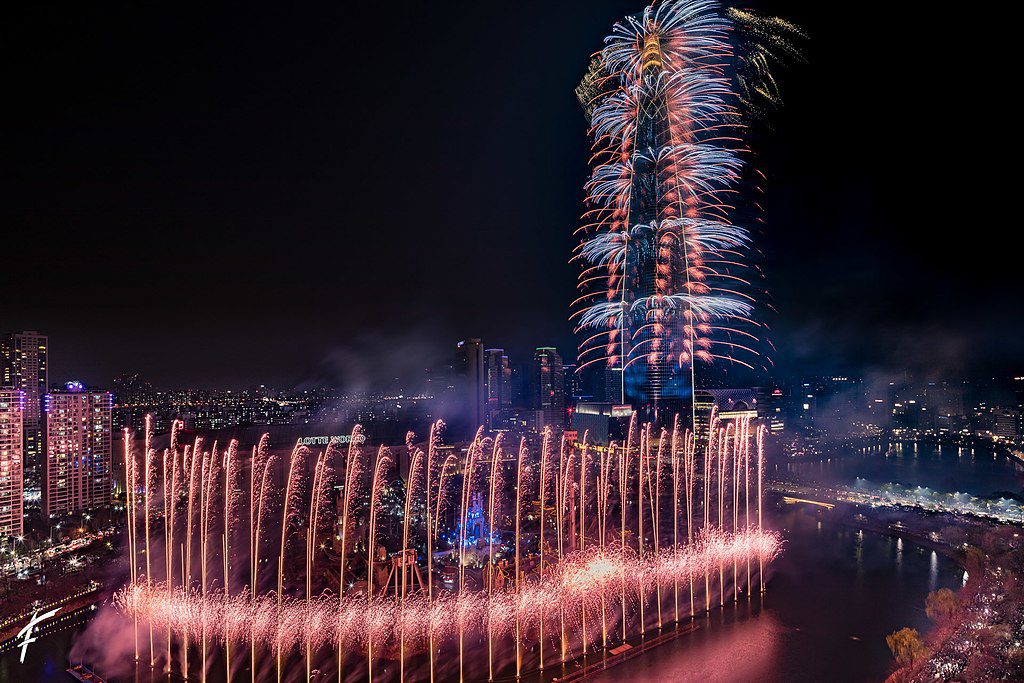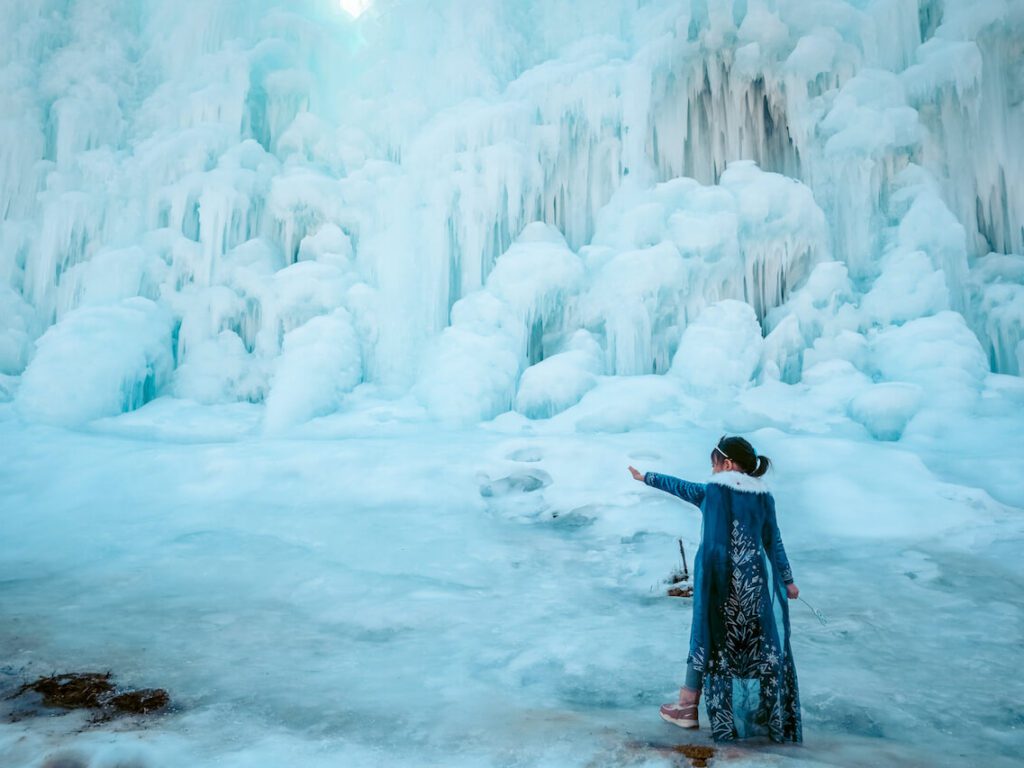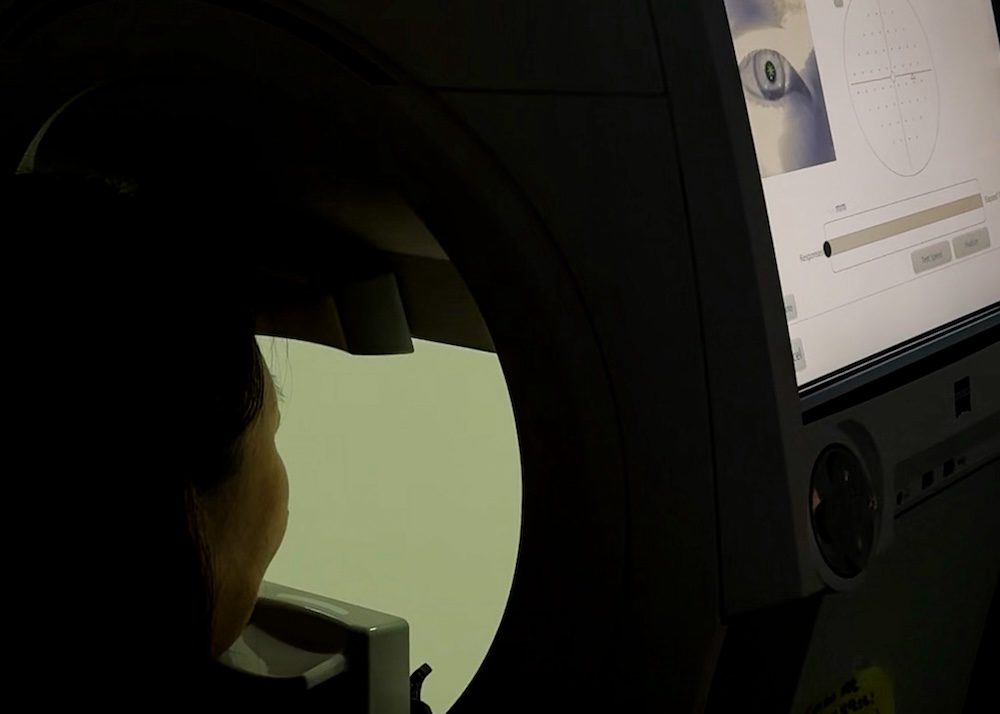Seollal | 7 Cool Korean Lunar New Year Traditions to Know About
Celebrated in both North AND South Korea, Seollal or Korean Lunar New Year is one of the country’s most significant national holidays. In the 2026 Year of the Fire Horse, the holiday period lasts from February 16th to 18th. Seollal itself falls on Saturday, February 17th, 2026.
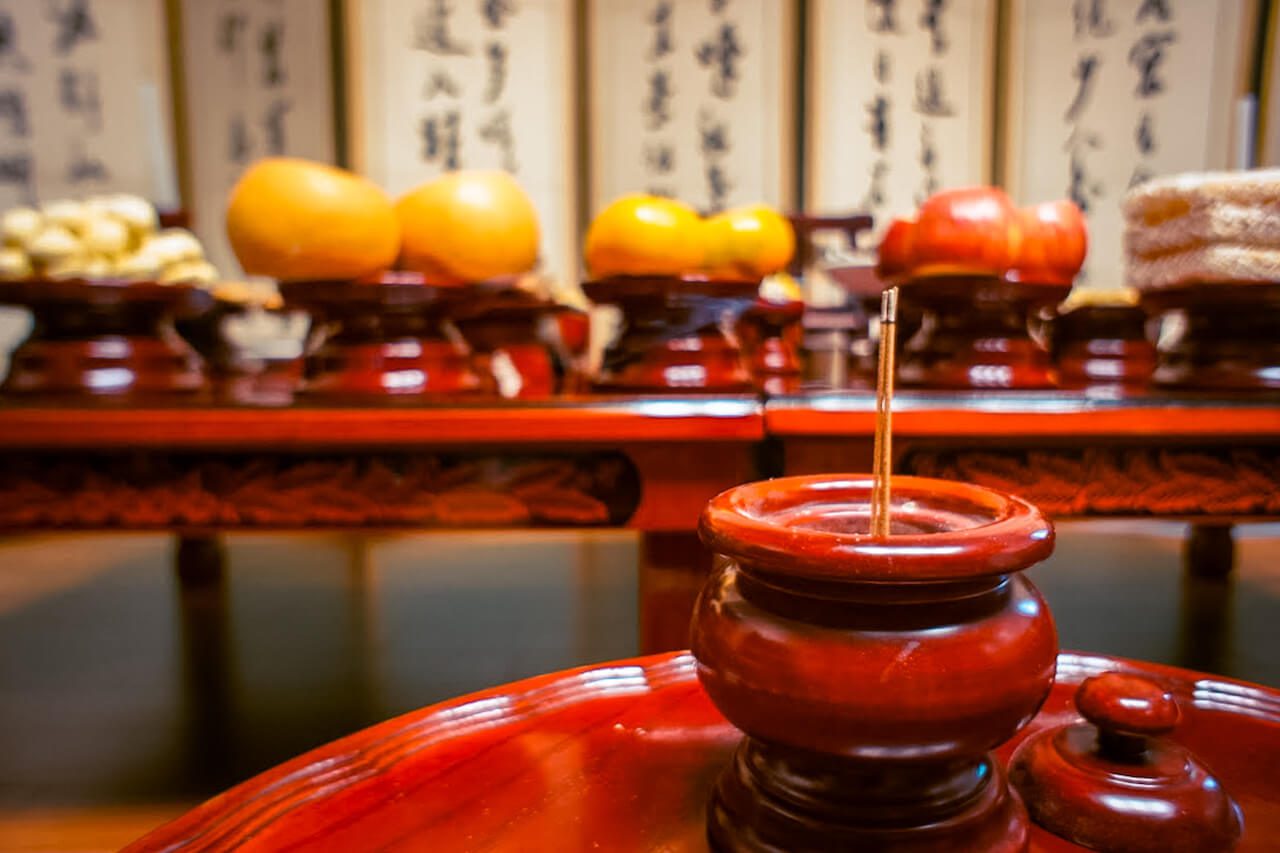
This is one of Korea’s most important traditional holidays.
In this guide, you’ll learn:
- why Seollal is important
- when and how Korean Lunar New Year is celebrated
- traditional rites, games, and foods specific to Seollal
- what to expect if you’re traveling to South Korea during the holiday period
*Any purchases made through affiliate links here help run this site. Support my blog here.
In this guide
When is Seollal | 설날?
SEOLLAL: February 17th, 2026 | PUBLIC HOLIDAY DATES: February 16th – 18th, 2026
Seollal is based on the Lunar Calendar, so the exact date varies every year. It coincides with the second new moon, after the winter solstice, and usually falls in January or February.

The date of Seollal is based on the Lunar Calendar.
All you REALLY need to know, is that Seollal itself falls on Saturday, February 17th in 2026, with public holiday dates stretching from Monday, February 16th to Wednesday, February 18th.
What to Expect during Korean Lunar New Year
If your trip to South Korea coincides with Seollal, it’s best to stay as close to home base as possible during the holiday dates. These are days off for all Koreans, and there’s a mass exodus into and out of Seoul and other major cities, as people reunite with their families all over the country.
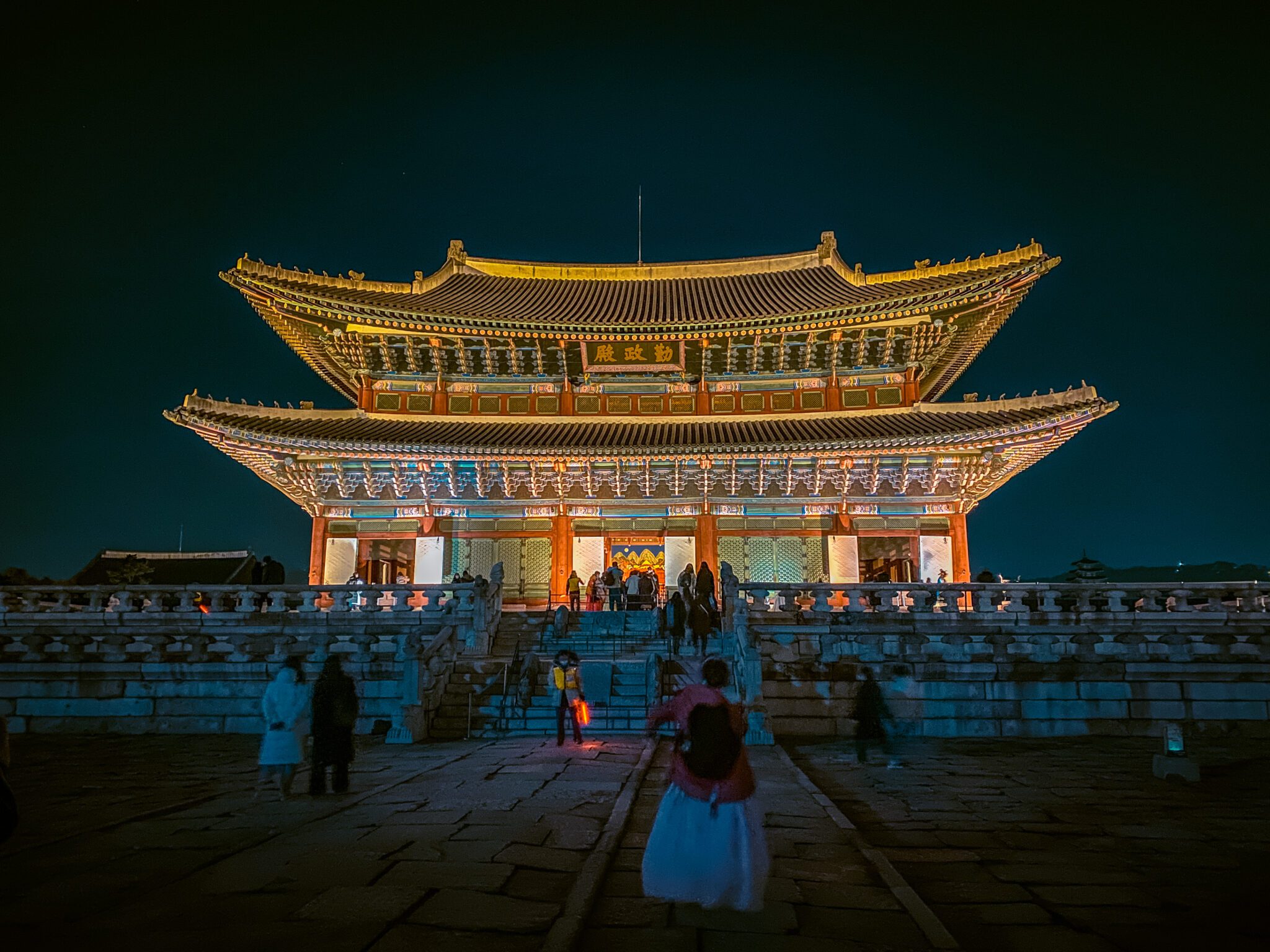
It’s best to stay in one place during the Seollal holiday.
That means that KTX high speed trains and many long-distance buses have been booked weeks in advance, and traffic on highways is incredibly backed up. This is NOT the time to attempt to travel between Busan and Seoul, since it can take twice as long as normal.
Despite the national days off, you won’t have trouble finding places to eat or shop, with major malls, restaurant chains, and popular tourist sites open to the public. Smaller, family-run restaurants and businesses will likely be shut down for the weekend though.
Holiday Preparations
While the day of Seollal itself is incredibly quiet, the days leading up to it are a buzz of activity. Traditional markets and stores are packed with people shopping for food and gifts to take back to their hometowns. And don’t even talk to me about Costco – which I made the mistake of going to yesterday.
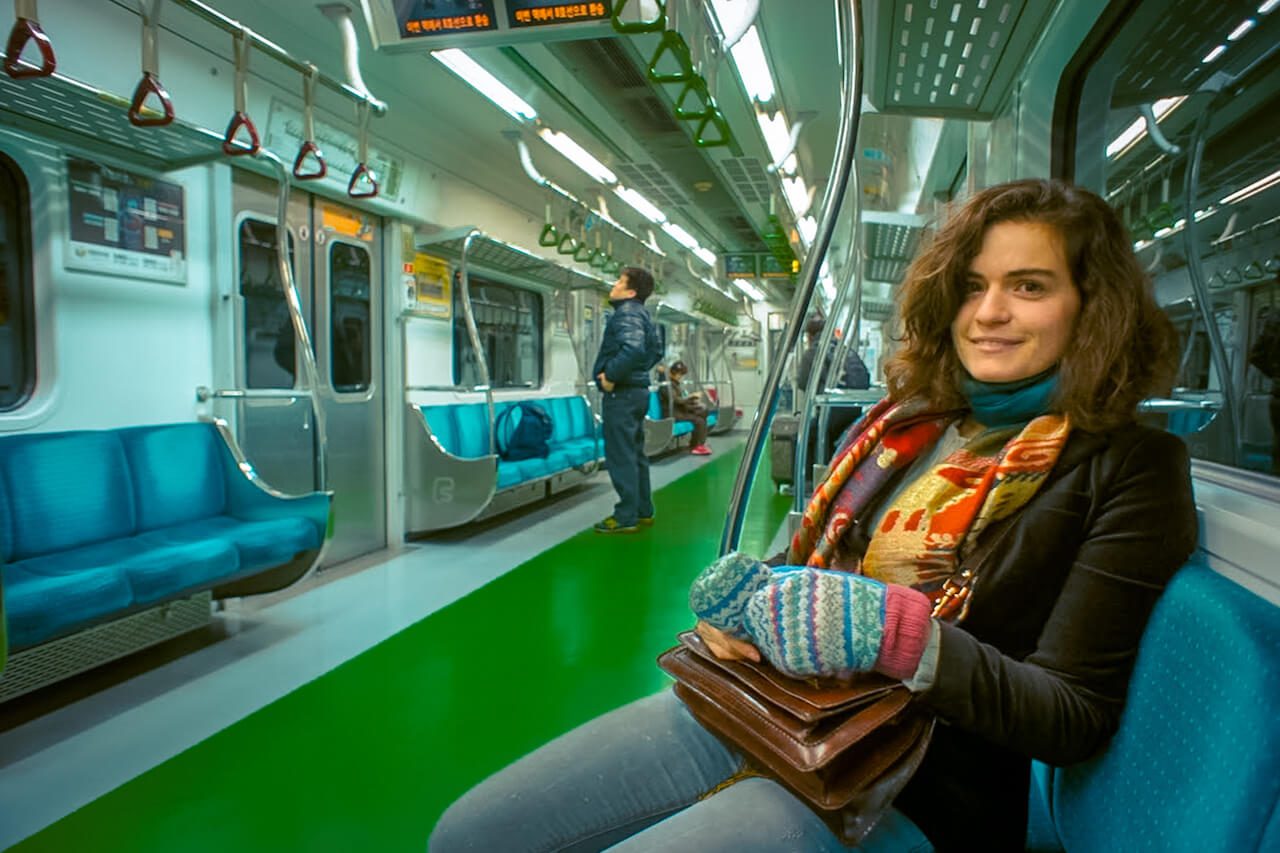
Yes! Subways really are this empty during Seollal in Seoul.
It’s definitely the chaos before the calm though, because once all the preparations are complete, major cities turn into ghost towns. During Seollal, you’ll be surprised by eerily empty subways, deserted sidewalks, and silent cafes.
Planning a trip to Korea?
Connect with other travellers | Ask and get answers to all your travel questions | Learn about all the best things to do in Korea | Join my Seoul and Beyond, South Korea Travel Planning Group on Facebook now.
South Korea Travel Essentials
Hotels and Other Accommodation
Tours, Admission Tickets, and Things to Do
Klook | Trazy | Get Your Guide | Fever |. Creatrip
Airport Transfers, Transit, and Transportation
Discounted AREX Incheon Airport Express Train
K Airport Limousine Bus from Incheon Airport
Private Airport Transfers from Incheon or Gimhae
Car Rentals (International Drivers Permit required)
Seoul to Busan KTX high speed rail tickets
Korean Express and Intercity Bus Reservations
Wifi, SIM Cards, and Portable Wifi
Airalo eSIM | unlimited data SIM cards | Portable and Pocket wifi
Money-Saving City Passes
Visit Busan Pass with FREE admission to 31 attractions + 77 discounted
Wowpass, Prepaid Debit Card for Cashless Payment in Korea (includes T-money Card)
Seollal Traditions
Along with Chuseok, Seollal is one of Korea’s most significant traditional holidays, marking the first day of the Korean Lunar New Year.
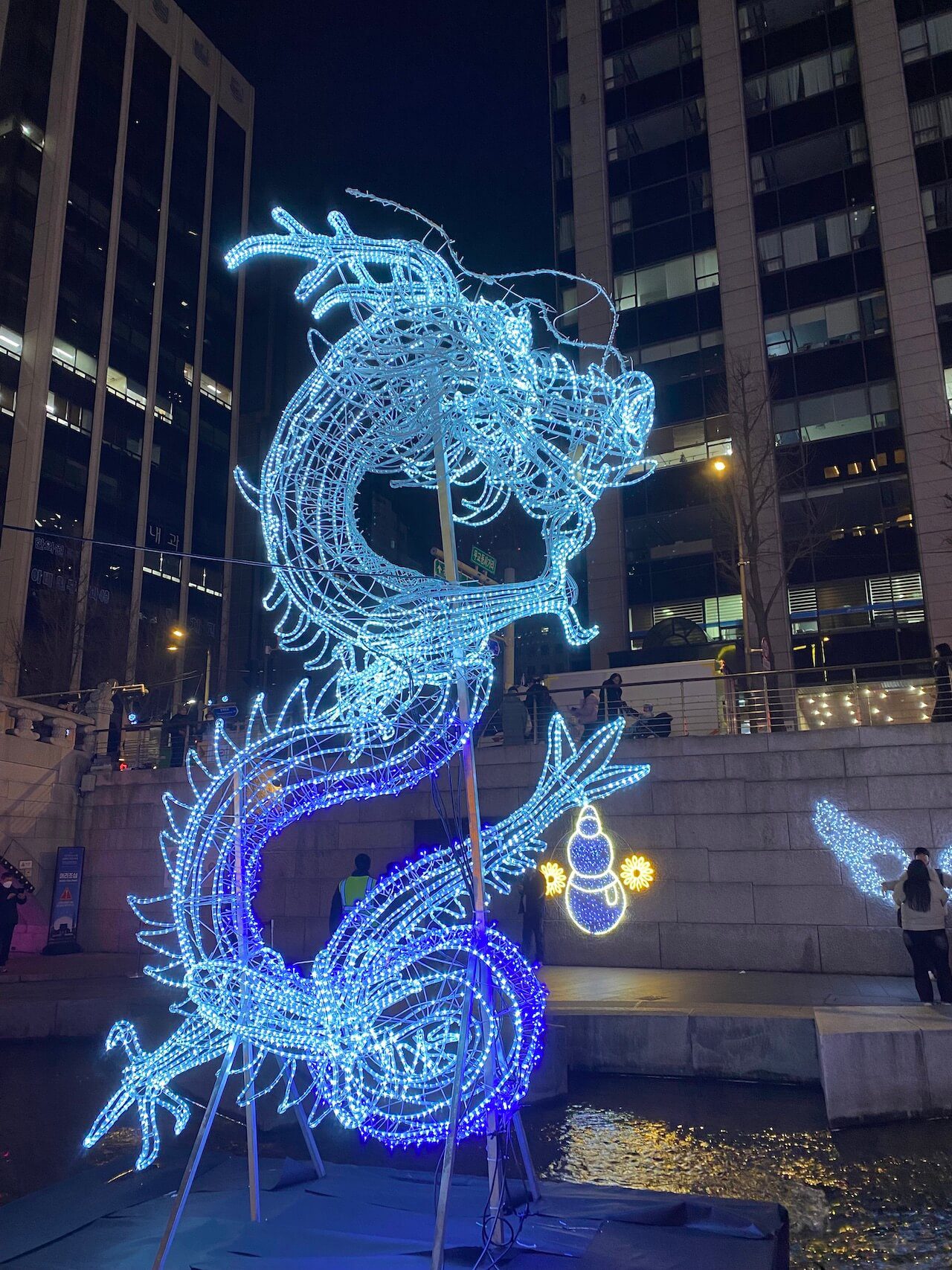
Seollal marks the first day of Lunar New Year. 2024 is the year of the dragon!
Unlike Christmas in Korea though, which is a holiday more for couples and friends, Seollal is an occasion when family gathers – traditionally at the home of the oldest male – to honour their ancestors, play folk games, and eat a special meal together.
The holiday is full of meaningful traditions, rites, and rituals, with most performed to honour a family’s ancestors and prepare for a brand new year. Of course, there’s also plenty of fun and food too.
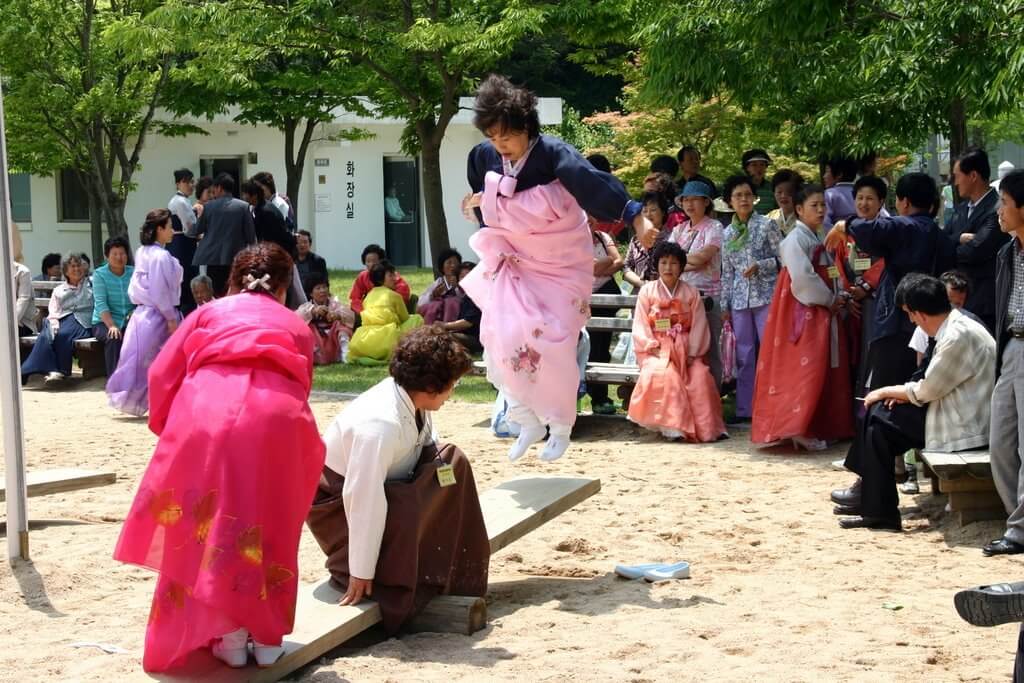
Neolttwigi is a fun Seollal game © Robert at Picasa (CC BY 3.0)
It’s important to note that as time passes, Korean Lunar New Year rituals are modernizing. There’s an extreme division of labour to the occasion that’s frankly quite patriarchal, so this is a welcome thing in my opinion. Some families now choose to forgo these practices for a trip overseas, or valuable time together instead.
Charye | 차례
Charye is perhaps the most meaningful part of Seollal. It’s a form of ancestral worship that is practiced on major holidays like Korean Lunar New Year and Chuseok. This expression of gratitude to your ancestors involves a highly structured Charye Table stacked with specially prepared foods, fruits, and drinks.
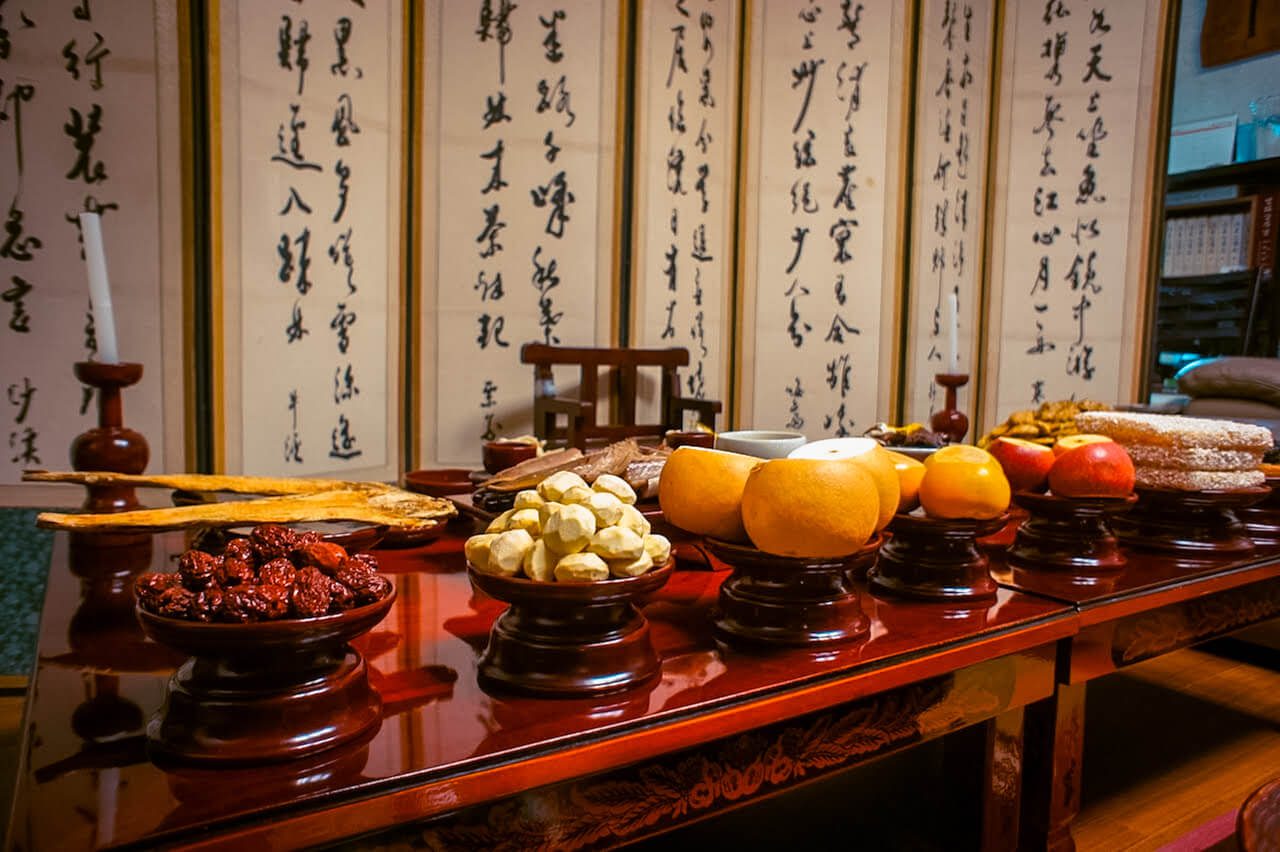
The Charye Table for Seollal is highly structured.
Traditionally, the Charye Table is prepared by female members of the family and then offered to the family’s ancestors by men. In the final stage of Charye, called eumbok | 음복, all members of the family enjoy the food together, and receive the ancestor’s blessing for the coming year.
Sebae | 세배
Sebae is a traditional Korean New Year’s Day greeting, which consists of a deep bow, to your parents, grandparents, or any other seniors. It’s common to say “Saehae bok mani badeuseyo” | 새해 복 많이 받으세요 at the same time. It means – I wish you a lot of luck this year.
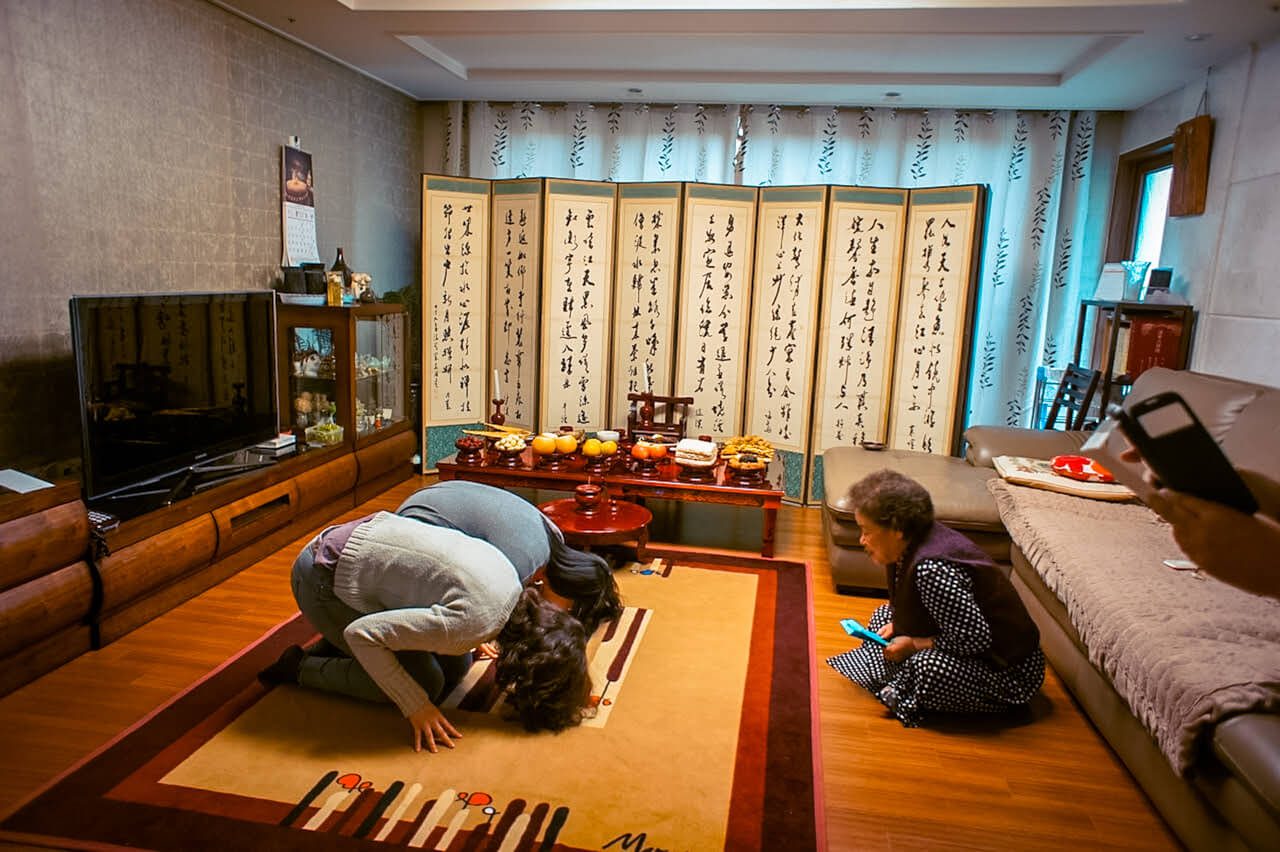
Doing sebae completely wrong, but at least we tried?
Growing up, I didn’t really understand all the meaning behind Seollal, but I definitely understood Sebae. Why? Because I always received an envelope of cash from my parents, after performing it!
Hanbok | 한복
These days, it’s rare to see Koreans wearing hanbok, except for on very special occasions or holidays. Seollal and Chuseok are definitely 2 days when you might see people out and about in their traditional dress.
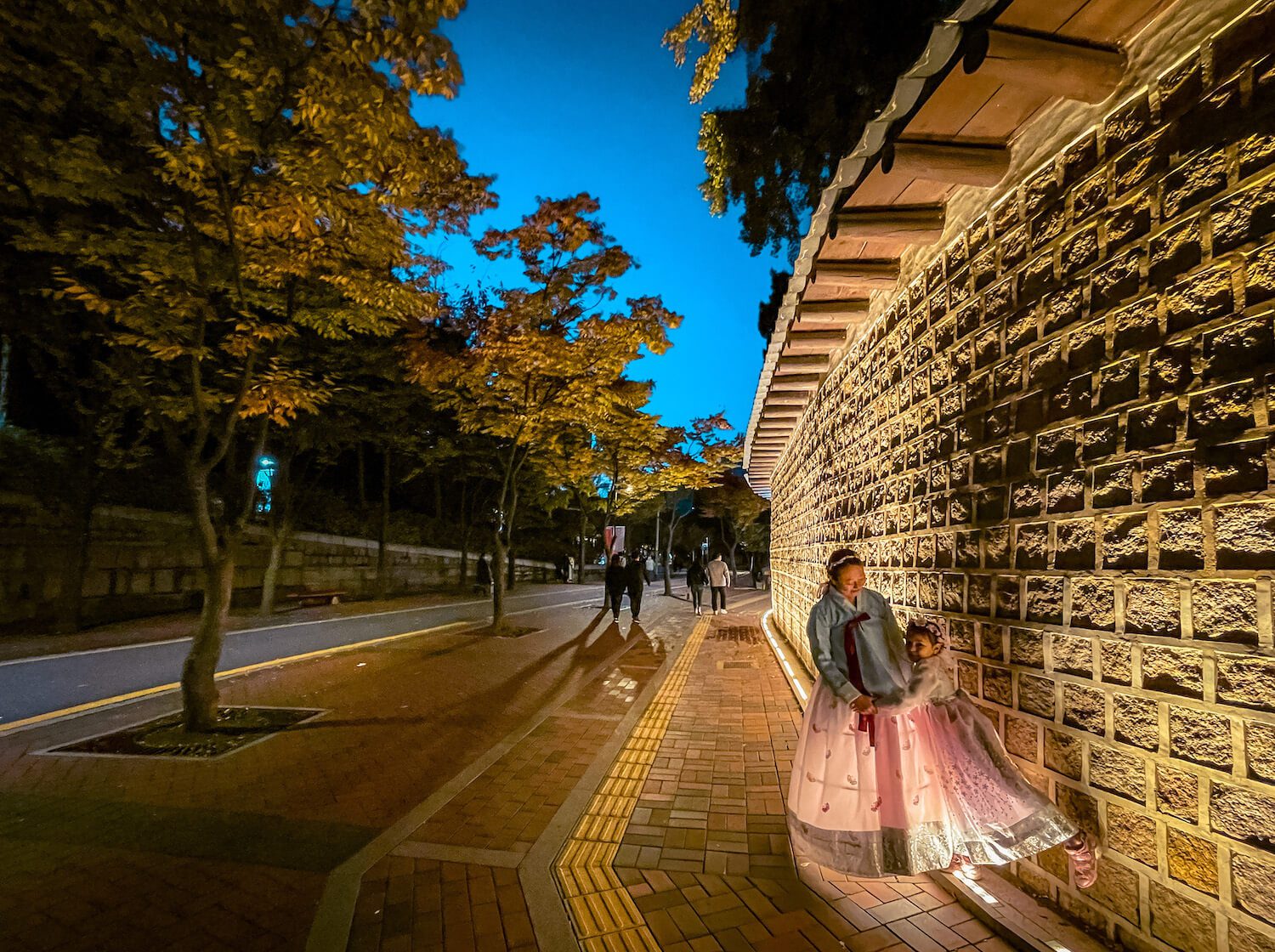
Some Koreans wear hanbok on important national holidays.
Seollal is an excellent time to rent a hanbok in Seoul while exploring historical sites, like Gyeongbokgung Palace or Bukchon Hanok Village. If you plan to be outside for an extended period of time though, make sure to wear super warm layers underneath your hanok. Korea in January is very, very cold.
HANBOK RENTAL NEAR GYEONGBOKGUNG PALACE | Get into a Seollal in Seoul mood by renting a traditional Korean hanbok. Hanboknam is walking distance to Gyeonbokgung Palace, and has a huge selection of beautiful hanbok to choose from. Check full details here.
Bokjumeoni | 복주머니
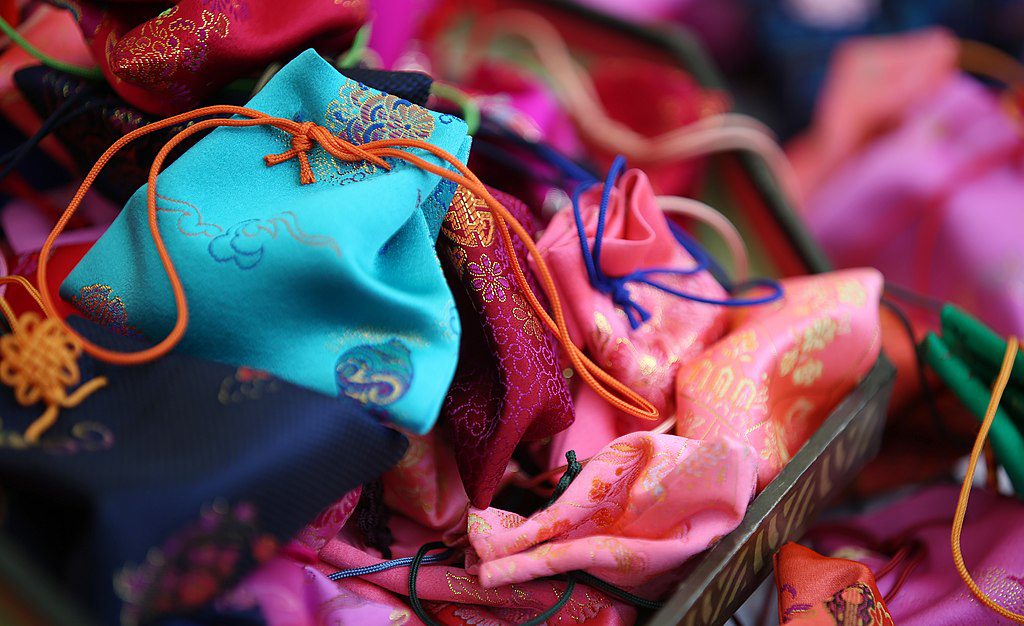
Beautiful bukjumeoni © Jeon Han, Korea.net (CC BY 2.0)
Bokjumeoni translates into lucky pockets. During Korean Lunar New Year, these beautifully embroidered bags are given as gifts, or hung on tree branches, or walls for luck. It’s believed that they’ll bring abundance and good fortune to the holder for the coming year.
Traditional Foods
There are special foods, prepared along with the Charye Table items on Lunar New Year in Korea. After all, what’s Seollal without a warming bowl of tteokguk?
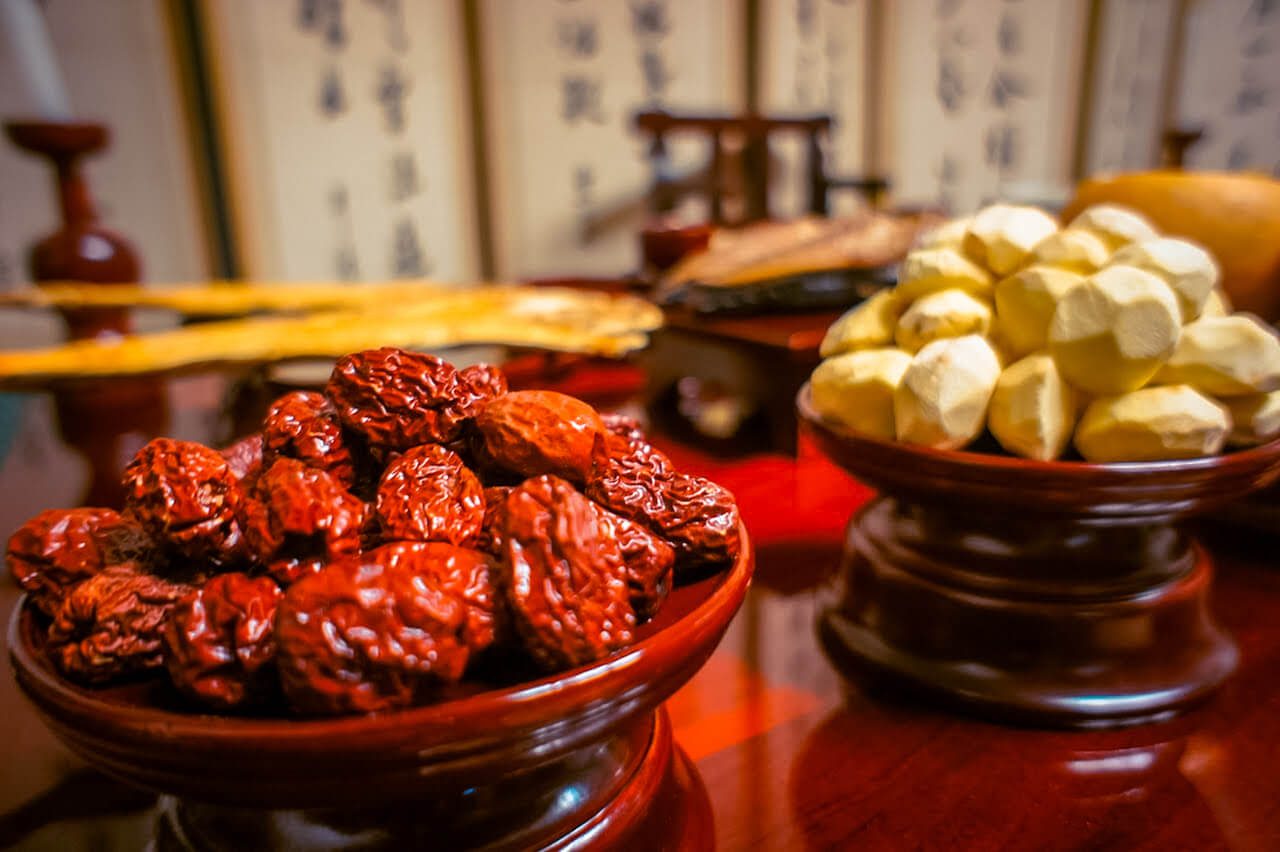
There are special foods prepared for Seollal along with the Charye Table.
Tteokguk | 떡국
The ingredients in teokguk or rice cake soup have huge symbolic importance. The whiteness of the rice cakes mean cleanliness and purity. Their coin-like shape? Abundance. A bowl of tteokguk is every Koreans way of starting a fresh new year, with the best luck possible.
After consuming a bowl of tteokguk on Seollal, one year is added to your age. It’s common for children to ask for multiple bowls of tteokguk to age “faster,” and for seniors to refuse their bowls to avoid aging. My dad actually says that he “ate a year,” when talking about getting older.
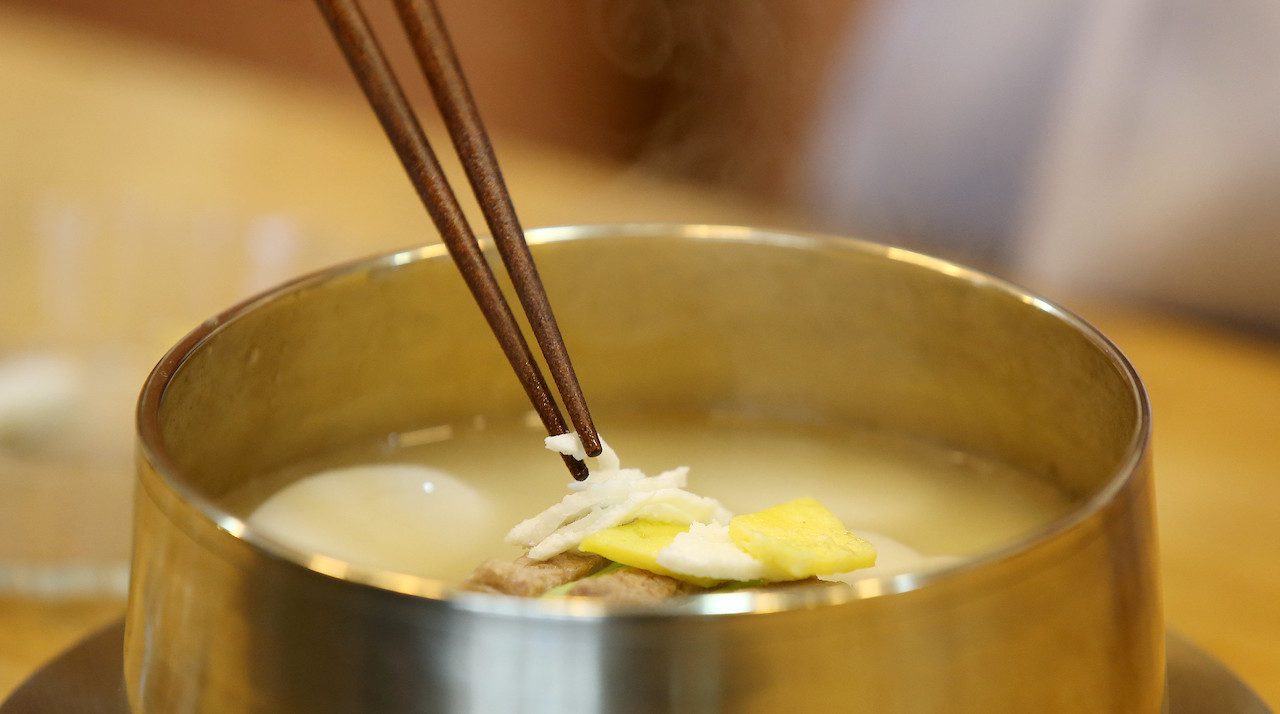
There’s no Seollal without tteokguk © Jeon Han, Korea.net (CC BY-NC-SA 2.0)
This unique Korean system of counting age will be scrapped in June of 2023, but until then (and probably for a long time to come) – don’t be surprised when someone asks, “How many bowls of tteokguk have you eaten?” to find out your age.
Jeon | 전
Think of jeon as a Korean pancake. It’s pretty much any ingredient that’s battered and pan-fried. The most common jeon for Seollal are dongtae jeon (pollack fillets) and yugwonjeon (meatballs), but really anything can be made into jeon.
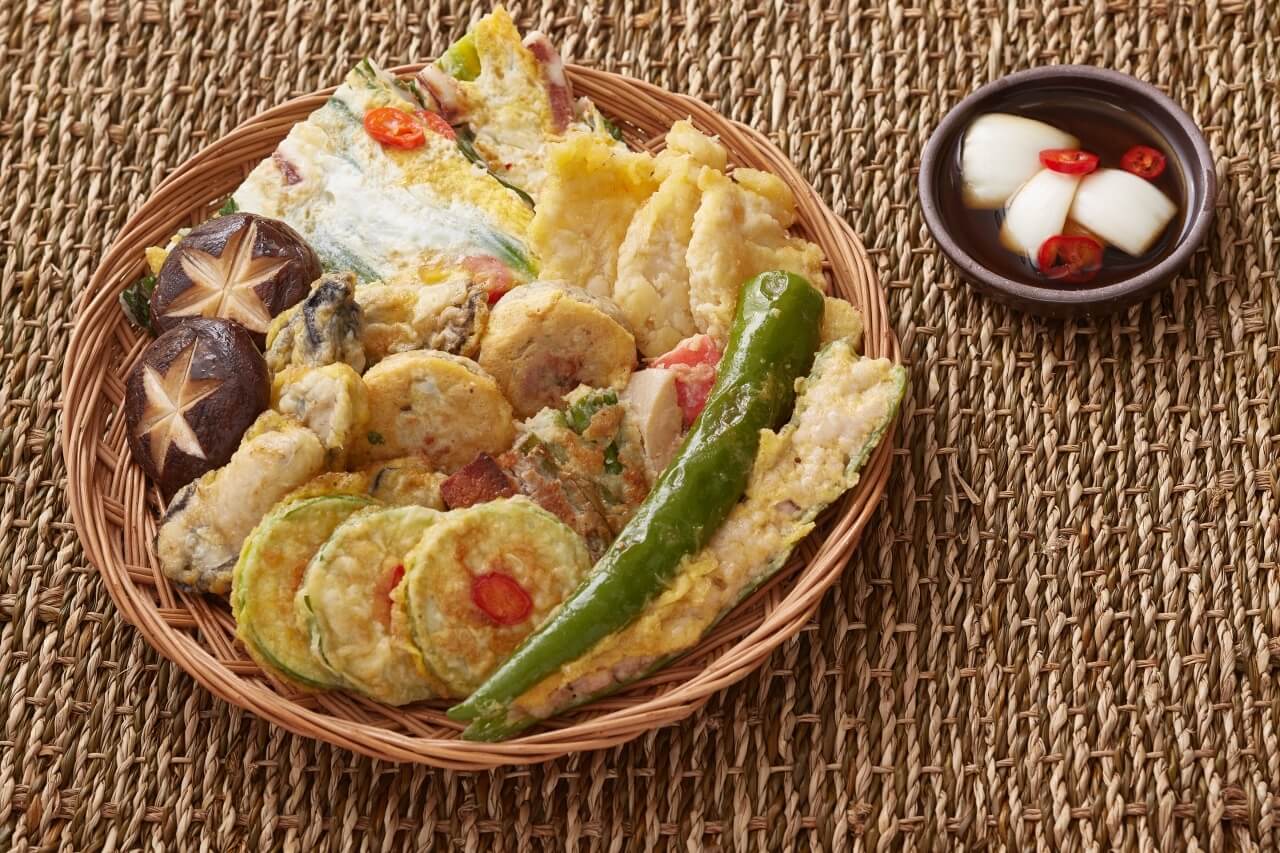
Jeon is a staple Seollal food © Dgram, Korea Tourism Organization
Preparing jeon is incredibly time-consuming and labour intensive, and I don’t know many Korean women who don’t dread this Seollal duty. Think of them as you pop every delicious morsel into your mouth.
LEARN TO MAKE KIMCHI | What better way to immerse yourself in Korean culture than by learning how to make kimchi and tteokbokki from scratch. Super convenient location in the heart of Myeongdong. Check full details here.
Traditional Games
After all the rites are performed, the food is eaten, and the dishes are washed, it’s time for families to relax with traditional Korean games. These are a staple of any Korean Lunar New Year celebration.
Yut-Nori | 윷놀이
While there are a number of traditional games played during Korean Lunar New Year, Yut-nori is probably the most popular. I grew up playing round after round with my family on New Year’s Day, and it was always a blast.
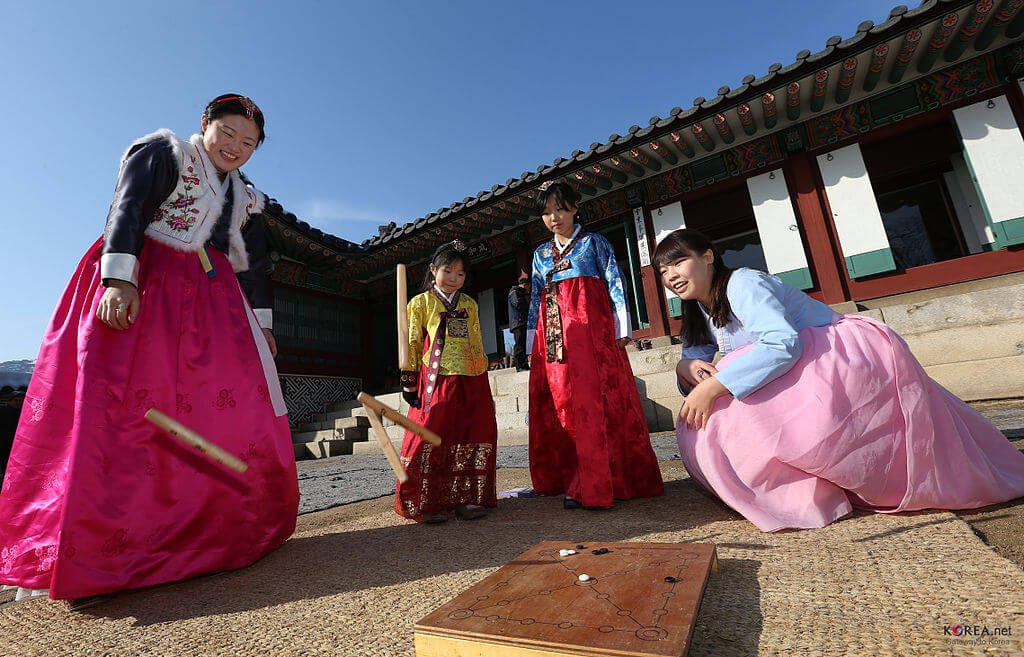
Yut-nori © Jeon Han, Korea.net (CC BY 2.0)
Yut is a deceptively simple game, involving a game board with several stations and paths. Yut-sticks are used instead of dice. These are thrown to determine how many steps each player can make. Yut-nori can get rowdy with spectators cheering on each side…. but that’s at least half the fun.
Other common folk games played over the holidays include:
- Jegichagi | 제기차기: hacky-sack
- Neolttwigi | 널뛰기: standing see-saw, traditionally played by women and girls
- Yeonnalligi | 연날리기: kite-flying
- Paengichigi | 파엔기치기: competitive spinning top game
- Gongginori | 공기놀이: similar to jacks
- Hwatu | 화투: Go-Stop card game
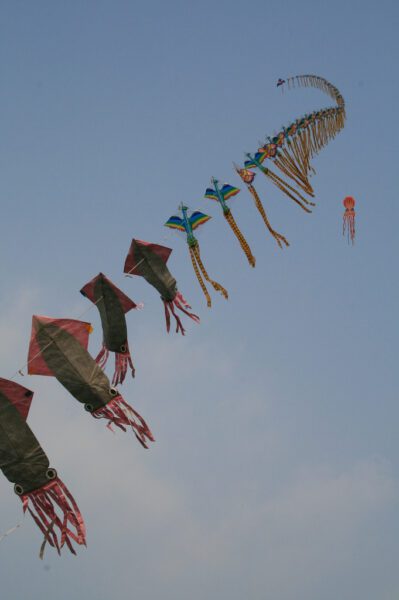
Yeonnalligi or kite-flying is common at Seollal © phareannah (CC BY 2.0)
Things to do during Korean Lunar New Year
If you’re traveling in Korea or based in Seoul during the Seollal holiday, this is definitely one time you’ll want to stay close to the city.
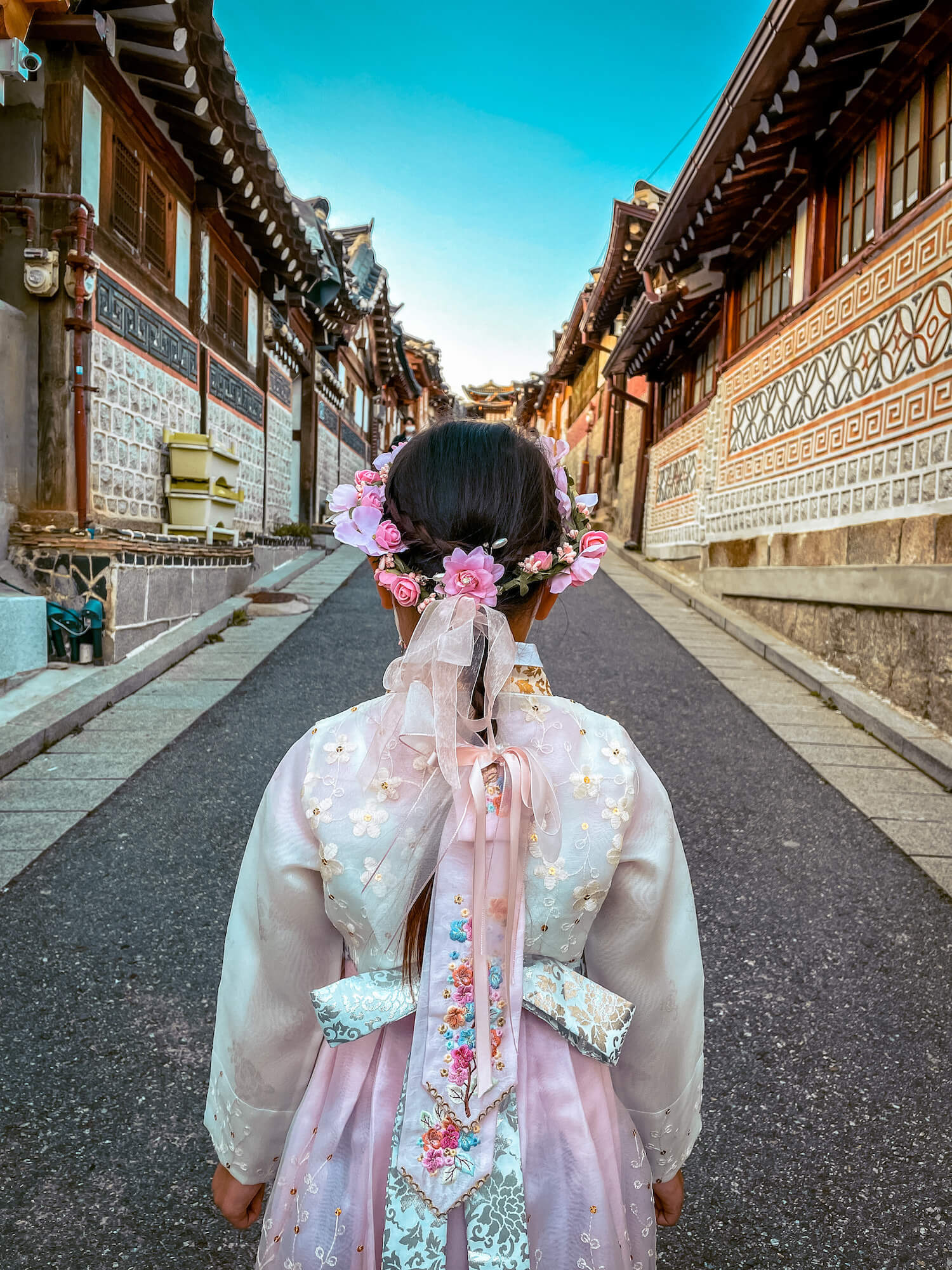
Seollal is a good time to explore Seoul’s sites without huge crowds.
I do not recommend planning long-distance trips to other parts of the country (like Busan), where public transit is required to get there. It’s difficult to book tickets, even for Koreans. Besides which, this is actually the perfect time to explore the city, nearby festivals, and winter activities without all the crowds and chaos.
While getting invited to a Korean friend’s house is undoubtedly the best way to experience Seollal authentically, it’s not in the cards for everyone. Not to worry – from traditional performances to unique activities to special discounts for the holiday period, there’s plenty to keep you occupied.
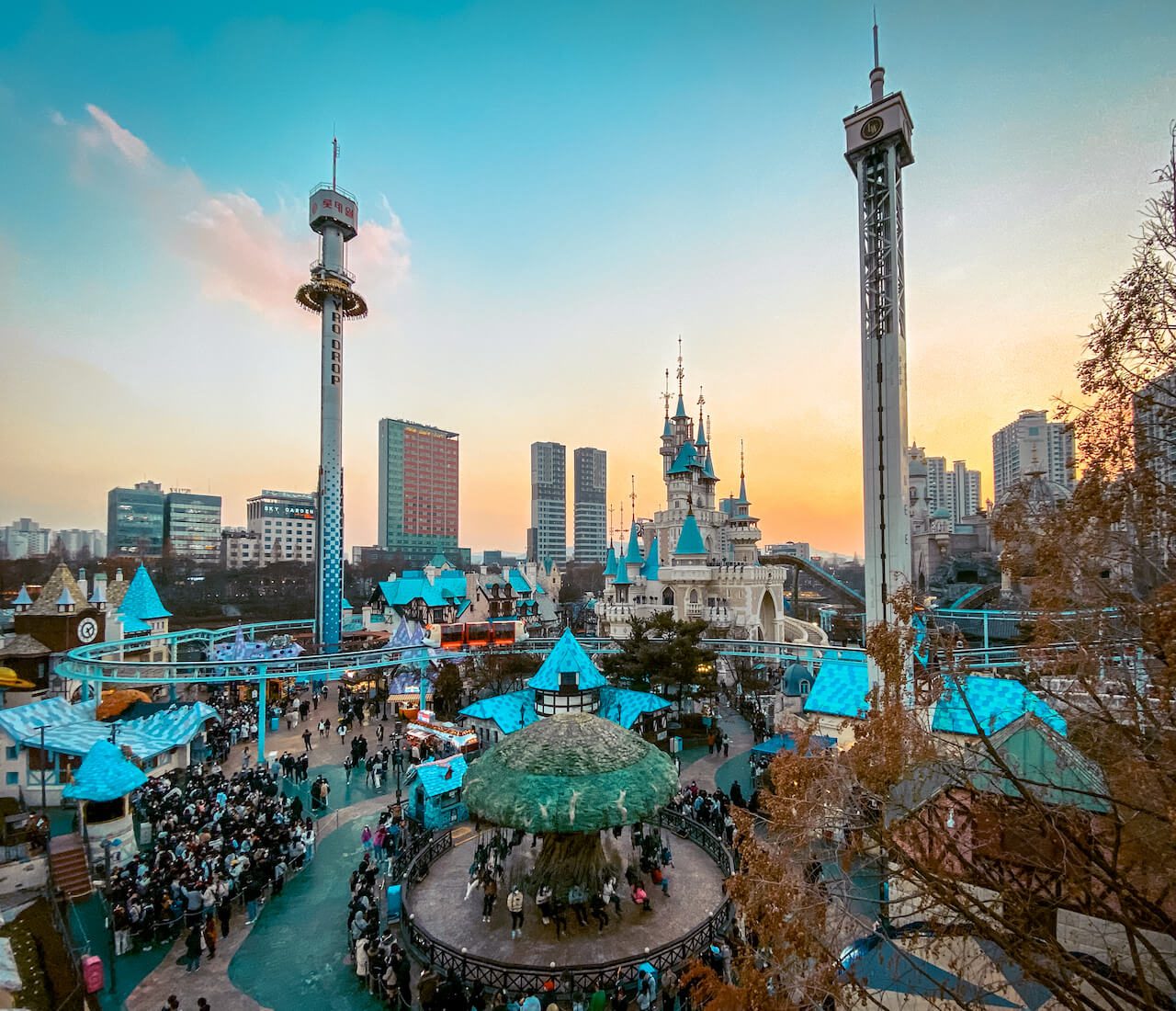
Attractions like Lotte World have special discounts for Seollal.
Check out my full guide to Seollal in Seoul to find out what to do for Korean Lunar New Year.
Wonderful Winter Tours in Korea
If you’ve got days off for Seollal, it might be a great opportunity to participate in one of Korea’s special winter festivals or activities. Some winter tours can be difficult to get to using public transit, so definitely compare prices and value, if there’s a snowy place you really want to visit.
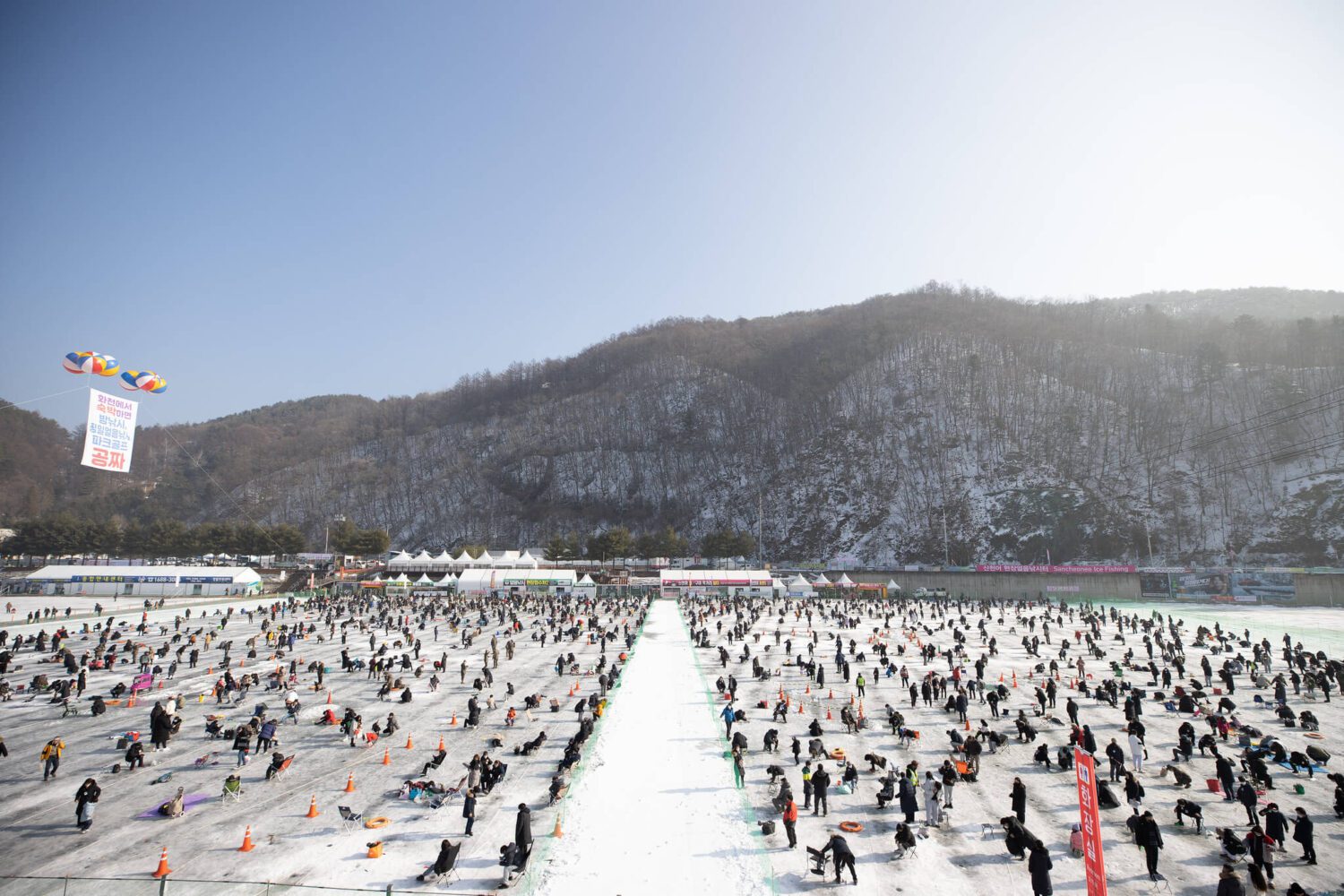
Ice fishing festivals are on during Seollal © Korea Tourism Organization
These are the current dates for the 2025 / 26 winter season, but keep in mind that everything is weather-dependent. Your tour operator will keep you appraised of any changes!
- Skiing, Snowboarding, and Sledding Tours across Korea | December – March
- 3 Romantic Winter Festivals in a Day | December 1st – February 1st
- Yongpyong Resort Balwangsan Cable Car + Samyang Ranch | December 3rd – February 27th
- Elysian Ski / Snowboarding / Sledding One Day Tour | December 5th – March 5th
- Vivaldi Park Snowy Land Sledding Tour | December 6th – February 28th
- Snowy Land + Alpaca World or Nami Island | December 8th – March 6th
- Daedunsan and Jeonju Hanok Village Day Tour from Seoul | December 15th – February 28th
- Wondae-ri Birch Forest + Maebawi Icewall Day Tour | December 15th – February 28th
- Eobi Ice Valley, Nami Island, Alpaca World + Garden of Morning Calm | December 16th – March 13th
- Cheongsong Ice Valley + Pohang Space Walk Tour + Gyeongju Woljeong Bridge | December 23rd – February 12th
- Gugok Ice Valley + Strawberry Picking + Snow Sledding | December 25th – February 28th
- Cheongyang Alps Village Ice Fountain Festival + Strawberry Picking | December 29th – February 23rd
- Sanjeong Lake Sledding Festival, Herb Island, Strawberry Picking + Icewall Cafe | December 26th – February 27th
- Hwacheon Sancheoneo Ice Fishing Festival Tour from Seoul | January 10th – February 1st
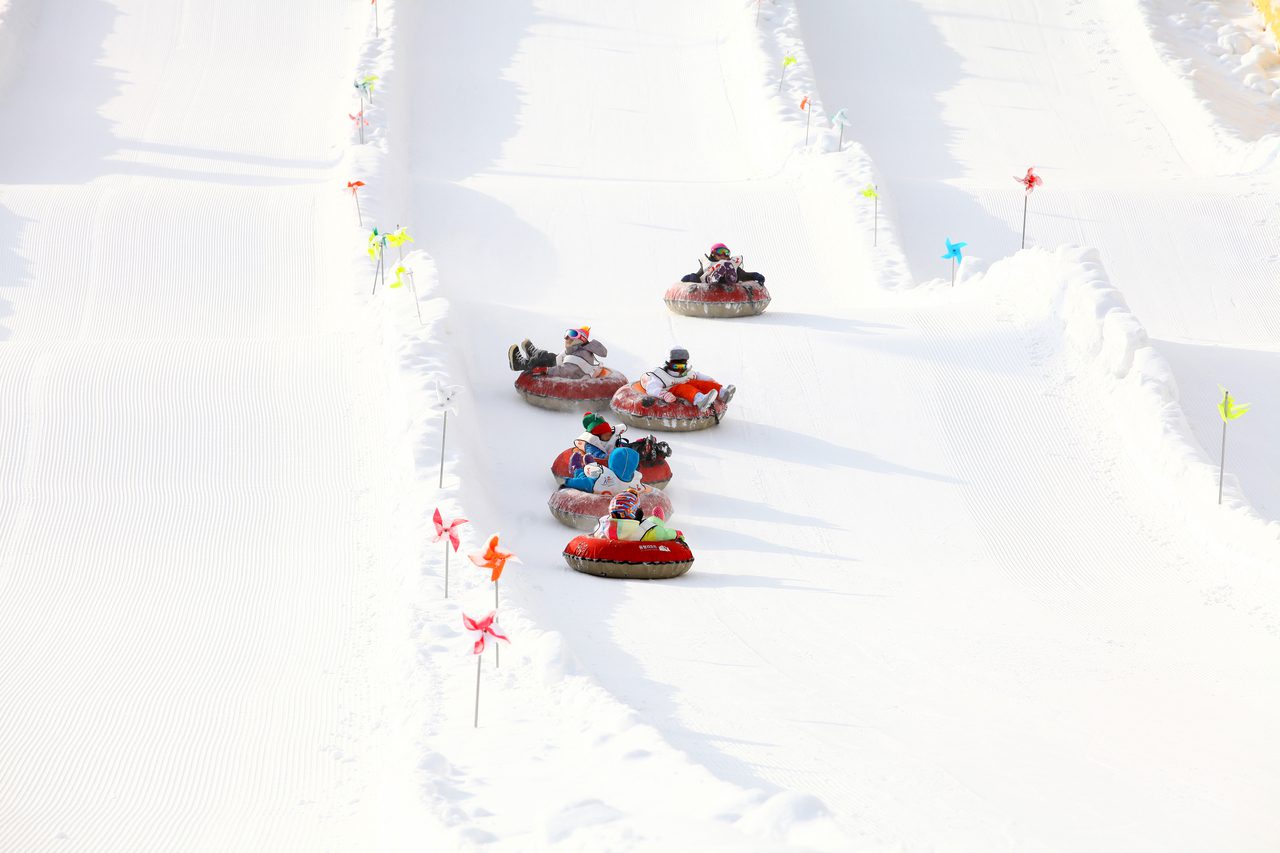
January is an excellent month for sledding and skiing ⓒ Lee Beomsu, Korea Tourism Organization
Seoul Staycations
In recent years, I’ve booked a hotel in Myeongdong, (even though I live in Seoul) for Korean holidays, so I could get to all the special events and attractions up in that area of Seoul more easily.
I’ve done this for the Lotus Lantern Festival, and also for Chuseok. It was definitely worth the saved transit time, especially with my daughter.
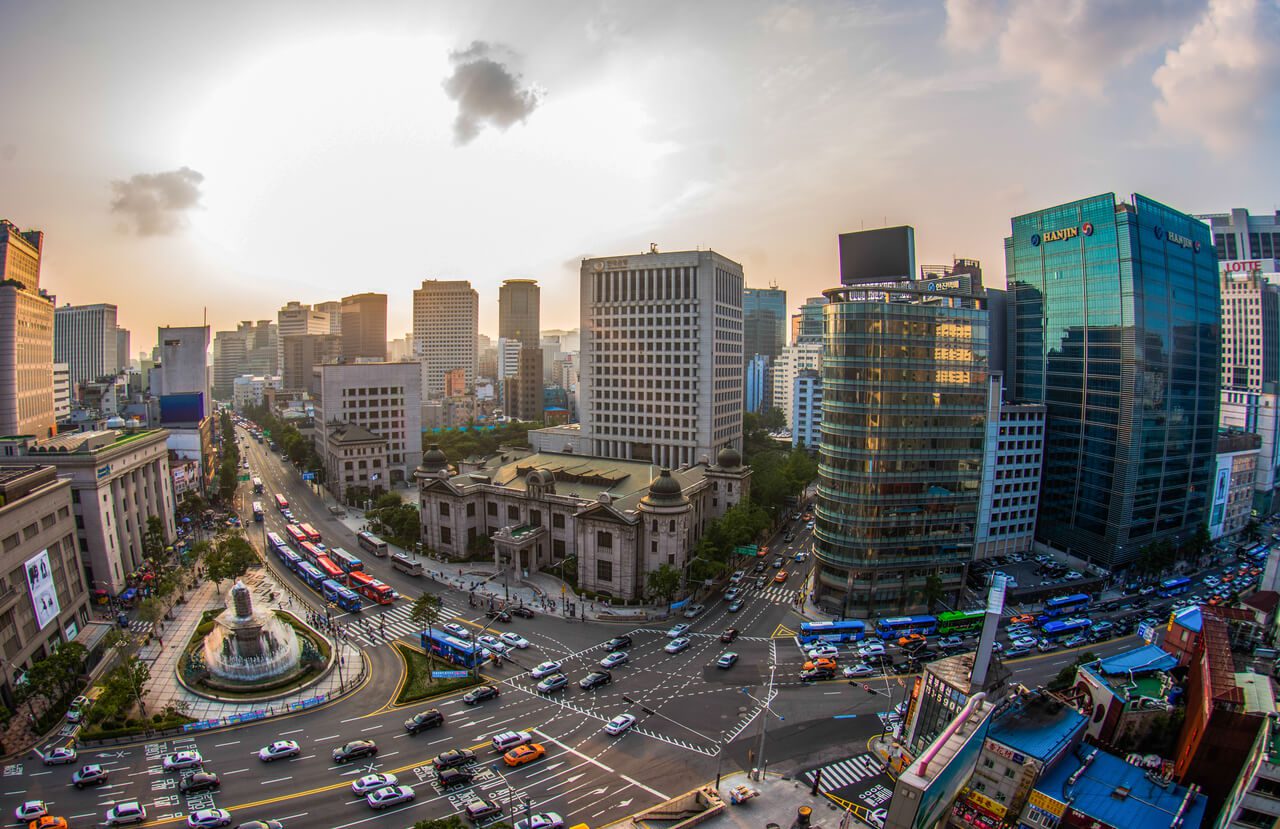
Myeongdong is close to many Seollal activities © Camelpress, Korea Tourism Organization
Seollal is actually an ideal time to spend some time in Seoul, particularly if you’re based down in Pyeongtaek or similar areas. Why? Traffic flows in the opposite direction, with roads headed UP to Seoul at the beginning of the holiday dead quiet, and vice versa at the end.
Whatever you decide to do, I wish you all the best for the coming year. 새해 복 많이 받으세요!
Did this article help you? Writers (and moms especially) need caffeine!
Help support my small business with a cup of coffee.
Korean Lunar New Year: Essential Info and FAQs
Seollal is one of Korea’s most important national holidays. What do you have planned for Korean Lunar New Year?


